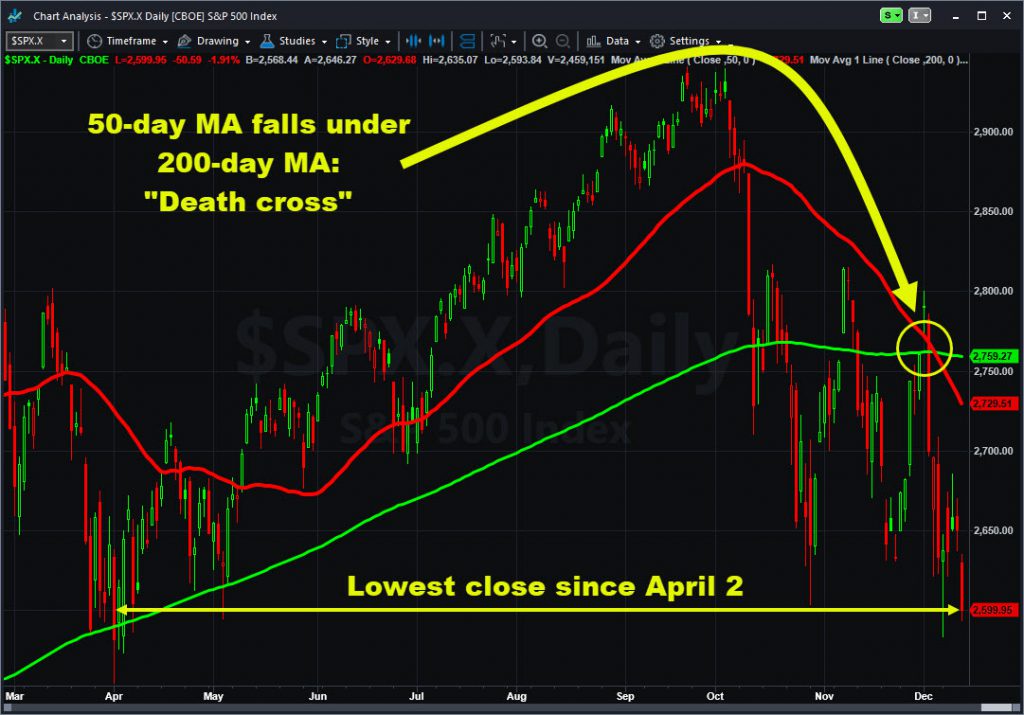Bears continued to hammer stocks last week, keeping the market on pace for its worst quarter since early this decade.
The S&P 500 attempted a feeble bounce before rolling over and closing at its lowest level since April. All told, it declined 1.2 percent between Friday, December 7, and Friday, December 14. The index has lost almost 11 percent of its value since the end of September, vying for the worst quarterly stretch since mid-2011.
Weakening technicals, along with growth and tariffs fears, remained the big culprits. Barely one-fifth of the S&P 500’s members are above their 50-day moving averages, and fewer than one-third are over their 200-day lines. The index also just had a death-cross (see chart) and closed far from its high almost every session.
Sentiment remained very gloomy, even though most economic reports weren’t all that bad. Unemployment claims and job openings remained strong, while retail sales only missed by a small margin and industrial numbers were inline.

There also seemed to be minor progress on the trade front as China retreated on intellectual property, soybeans and autos. Investors, burned many times on the tariff front, didn’t seem to believe the good news.
Speaking of news, there was an unusually large number of negative stories on a range of companies like Johnson & Johnson (JNJ), Costco (COST) and Pfizer (PFE). None of them had much to do with China or trade wars. See our special report for more.
Financials and energy led the carnage last week, with drops of more than 3 percent. Banks, transports, small caps, home builders and retailers endured similar fates. Only utilities and communications eked out small gains.
Under Armour (UAA) slid 20 percent last week on poor guidance, accounting for the single biggest drop in the S&P 500. Debt-laden toy company Mattel (MAT) was the second-lowest in the rankings.
Broadcom (AVGO) was the best-performer, riding strong results from December 6 up more than 11 percent. Twitter (TWTR) was second with a 9 percent gain.
Investors now face a tough choice. On the one hand, stocks have gotten cheap and the economy doesn’t seem near recession. Interest rates also seem to have peaked for now.
On the other hand, why build positions at this moment in late December? Trade worries could linger through a key deadline in March, giving big institutions no reason to buy stocks until more certainty emerges. Earnings season could be rough. Maybe that’s why Lipper reported record mutual-fund outflows last week.
This week’s calendar is dominated by the Federal Reserve, although there are several other events, starting with the New York Fed’s Empire manufacturing number and NAHB’s home-builder index today.
Tomorrow brings housing starts and building permits. FedEx (FDX) and Micron Technology (MU) report earnings in the post market.
Wednesday’s Fed day. Most forecasters expect Jerome Powell to raise interest rates but then scale back the aggressiveness of future hikes. Oil inventories are also due.
Thursday brings initial jobless claims and Nike (NKE) earnings after the close.
The week ends with durable-goods orders, revised gross domestic product and personal income and spending on Friday morning. Christmas is the following week. (2)


























